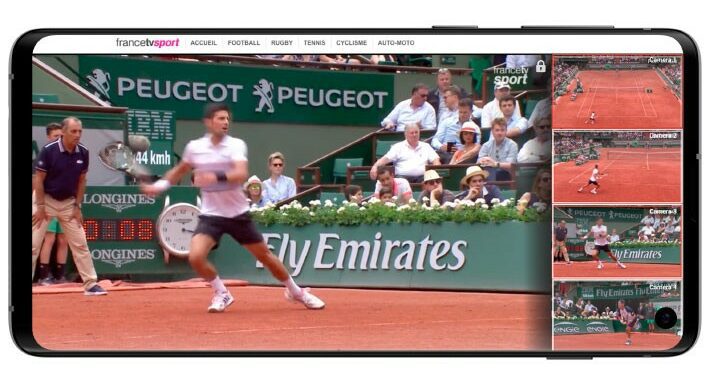Multiview streaming is stepping into the limelight, reshaping how audiences experience live sports viewing. Though it has been around for over a decade, the technology is now gaining significant traction, especially in the sports broadcasting industry. Initially made popular by NetcoSport and Canal+ in France with its “expert mode,” multiview allows viewers to watch multiple sports events on the same screen and choose different camera angles for premium sports like Formula 1, Soccer, and Football. This feature has made its way to the US, where streaming giants like Amazon Prime, Apple TV, YouTube TV, and Peacock leverage it to enhance their sports coverage and fan engagement.
One of the most significant benefits of multiview streaming is the ability for fans to keep track of multiple games simultaneously. NBC reported that 25% of users engaged with multiview during the Paris Olympics, a clear sign of its growing popularity. Features like the Red Zone alert, which keeps fans updated on key moments across games, have also been a hit, particularly with NFL enthusiasts.

From a technical standpoint, multiview streaming can be delivered in several ways, each with its own set of challenges. The main distinction lies between multi-game and multi-cam formats. A slight delay during view switching is acceptable in multi-game streaming, similar to changing channels. However, in multi-cam formats, where viewers watch different angles of the same event, seamless transitions are crucial to ensure all action. From a sports right-owner perspective, this key KPI is paramount if you intend to monetize Multiview. Client integration is another critical aspect. Most multiview functionalities are embedded within apps, with web-based implementations being relatively rare. Yet, the most crucial factor in the success of multiview streaming is user experience. According to Cyril Zajac, CEO of Omnilive, customer retention heavily relies on delivering a seamless and intuitive user experience as well as a strong branded narrative and storytelling.
Cyril Zajac says, “At Omnilive, our clients value the technical excellence of our Multiview deployment. However, they place a premium on the user experience, as this is key to enhancing customer retention and loyalty. It is NOT about turning viewers into directors. It’s about inventing new formats and IP where content and technology are highly intertwined.
If Multiview can be seen as a tool and not just a feature, Primetime Sports, by inverting the user experience paradigm, could open up a whole new world of audience engagement and monetization.
As the multiview market matures, competition to find the most efficient and user-friendly solution intensifies. While it’s unclear if a single approach will dominate, the winning solution will need to be compatible, capable of scaling to millions of users, and support various business models, including low-latency streaming, synchronized distribution, targeted advertising, and DRM-based content protection.
In conclusion, multiview streaming is not just a technological novelty but a game-changing feature that enhances the viewing experience for sports fans. As streaming services continue to innovate and refine this technology, we can expect even more immersive and interactive experiences in the years to come.







